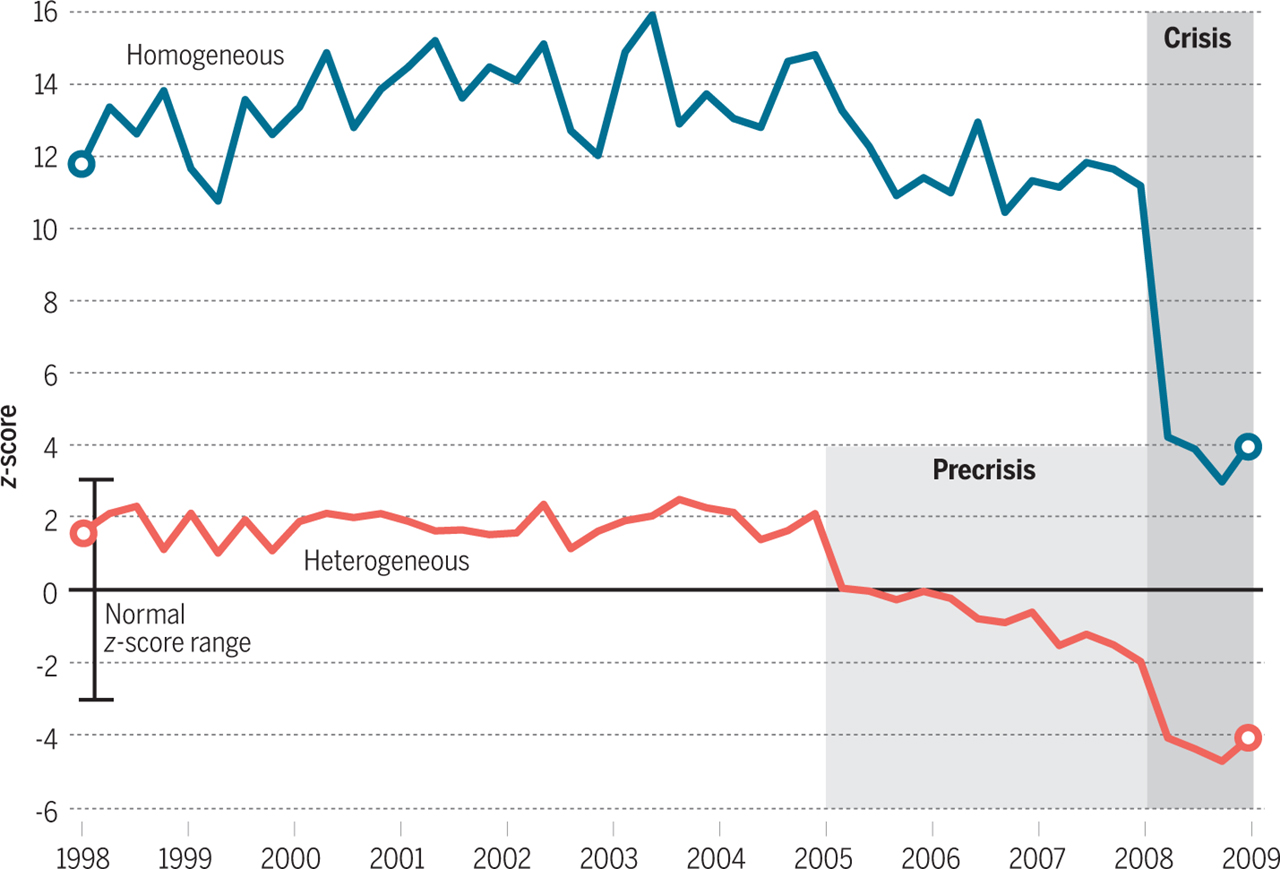[前沿] 复杂性理论与金融调控
来源:
作者:狄增如
发布时间:2016-02-23
浏览次数:

Science杂志在2016年2月19日出版的 VOL 351 ISSUE 6275上,于Insights栏目发表了题为:Complexity theory and financial regulation的文章,认为Economic policy needs interdisciplinary network analysis and behavioral modeling。
INSIGHTS | PERSPECTIVES
COMPLEX SYSTEMS
Complexity theory and financial regulation
Economic policy needs interdisciplinary network analysis and behavioral modeling
Traditional economic theory could not explain, much less predict, the near collapse of the financial system and its long-lasting effects on the global economy.
Since the 2008 crisis, there has been increasing interest in using ideas from complexity theory to make sense of economic and financial markets. Concepts, such as tipping points, networks, contagion, feedback, and resilience have entered the financial and regulatory lexicon, but actual use of complexity models and results remains at an early stage. Recent insights and techniques offer potential for better monitoring and management of highly interconnected economic and financial systems and, thus, may help anticipate and manage future crises.

Early-warning signals of the 2008 crisis in the Dutch interbank network. The figure portrays a temporal analysis of two loops, pairs of banks that are at the same time debtor and creditor to each other. Although the raw number of two loops is not very informative about possible ongoing structural changes, its comparison with a random network model benchmark is. A z-score represents the number of standard deviations by which the number of two loops in the real network deviates from its expected value in the model. Small magnitude z-scores (<3) indicate approximate consistency with the model, whereas larger magnitudes indicate statistically significant deviations. Two different random network models were used: a homogeneous network with the same total number of links as in the real network (top) and a heterogeneous network where every bank has the same number of connections as in the real network (bottom). The homogeneous model, often used in standard analyses, highlights only a late and abrupt structural change (2008). The more realistic heterogeneous model also identifies a gradual, early-warning “precrisis” phase (2005–2007). [Modified from (2)]


